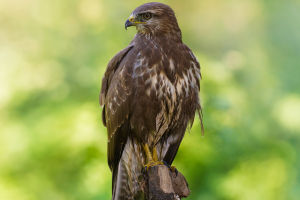Pelicans, with their striking appearance and impressive fishing skills, are among the most fascinating birds in the avian world.
Recognizable by their large, elongated bills and expansive throat pouches, pelicans have long captured human imagination and scientific interest.
These birds are not only adept at fishing but also exhibit intriguing social behaviors and adaptations that make them stand out in the animal kingdom.
The Ultimate Fishing Tool
One of the pelican’s most notable features is its bill, which can reach lengths of up to 18 inches depending on the species. This bill is not just for show; it plays a crucial role in their feeding strategy. The pelican’s pouch, a flexible, expandable sac of skin, is used to scoop up fish. When diving, pelicans often plunge from impressive heights, using their bills to trap fish and then strain the water out before swallowing their prey. This method is incredibly efficient, allowing them to catch multiple fish at once during a single dive.
Social Structures and Behavior
Pelicans are highly social birds, often found in large colonies, particularly during the breeding season. These colonies can consist of hundreds or even thousands of individuals. Social interactions within these groups are complex and essential for survival. For instance, pelicans coordinate their fishing efforts to increase their chances of a successful catch. They can be seen working together to herd fish into shallow waters where they are easier to catch. Additionally, their communal nesting sites provide safety in numbers, protecting them from predators and harsh environmental conditions.
Diverse Species and Adaptations
There are eight species of pelicans, each adapted to its unique environment. The American white pelican, for example, is found primarily in North America and is known for its striking white plumage and massive size. In contrast, the brown pelican, with its distinctive dark brown feathers and smaller size, is often spotted along the coasts of the Americas. Each species has evolved specific traits suited to their habitat—whether it’s the brown pelican’s proficiency at diving from the air or the Australian pelican’s ability to hunt in shallow waters.
Conservation Challenges
Despite their adaptability, pelicans face significant threats from habitat loss, pollution, and climate change. Wetland destruction, particularly, impacts their breeding and feeding grounds. Moreover, chemical pollutants can contaminate their food sources, leading to health issues. Conservation efforts are crucial to protect these majestic birds and their habitats. Initiatives include habitat restoration, pollution control, and legal protection to ensure that pelican populations remain stable and healthy.
Lykkers, pelicans have a long-standing presence in human culture, symbolizing resourcefulness and resilience. Their unique fishing techniques and social behaviors offer valuable insights into the complexities of avian life. As we continue to study and protect these remarkable birds, we deepen our appreciation for their role in the ecosystem and the beauty they bring to our world.


